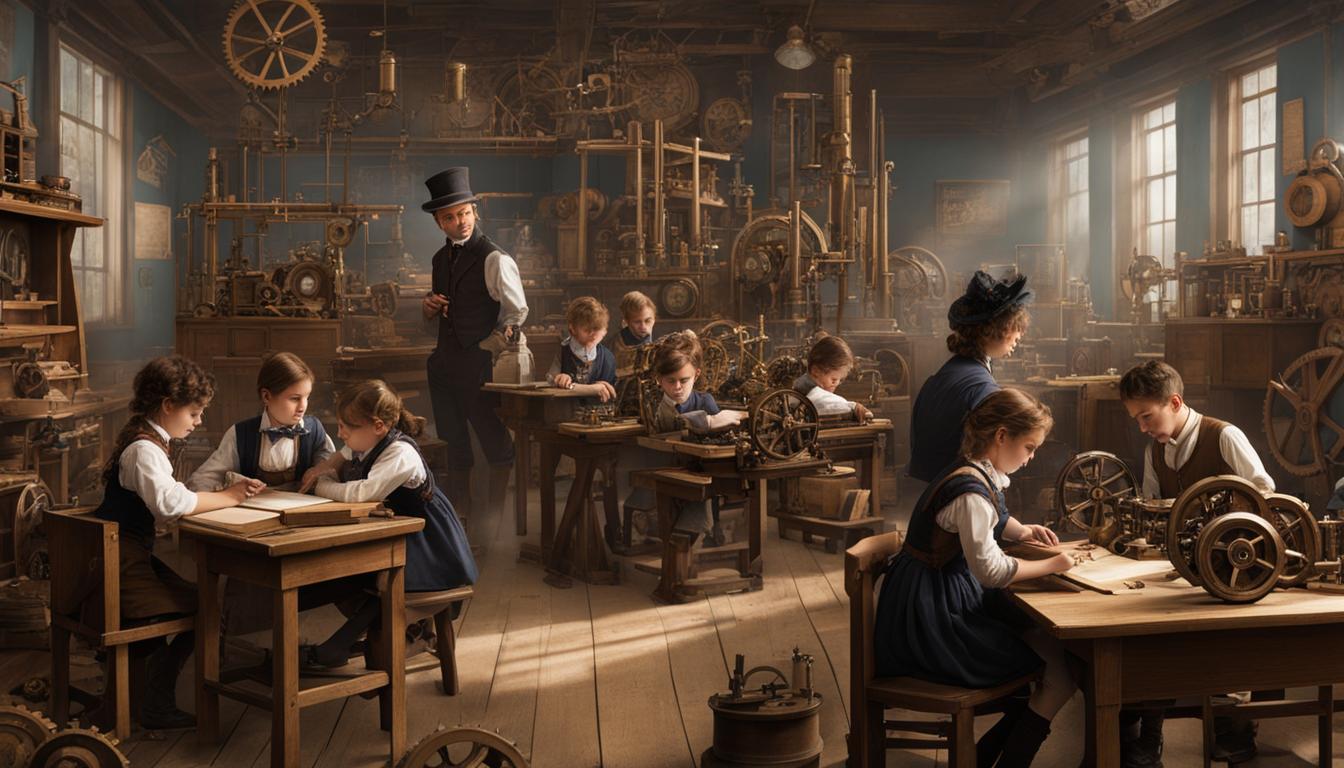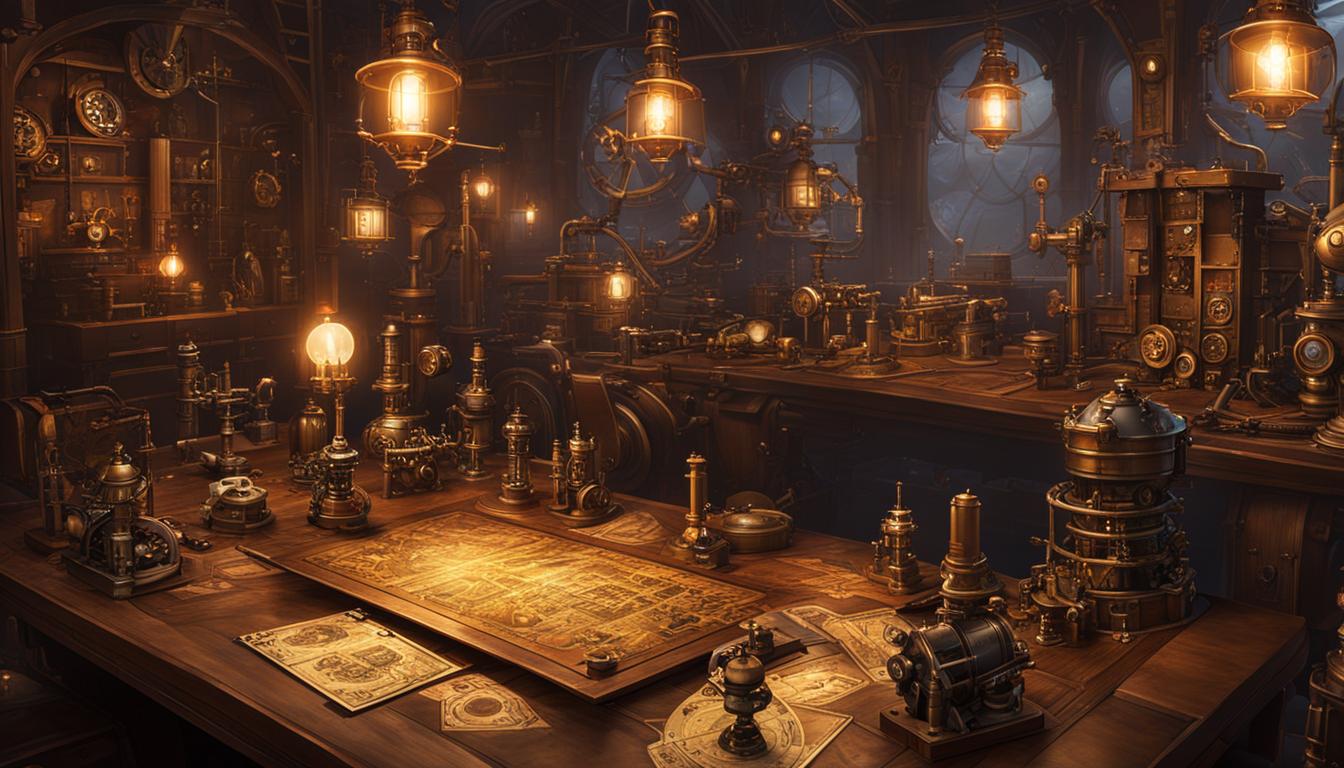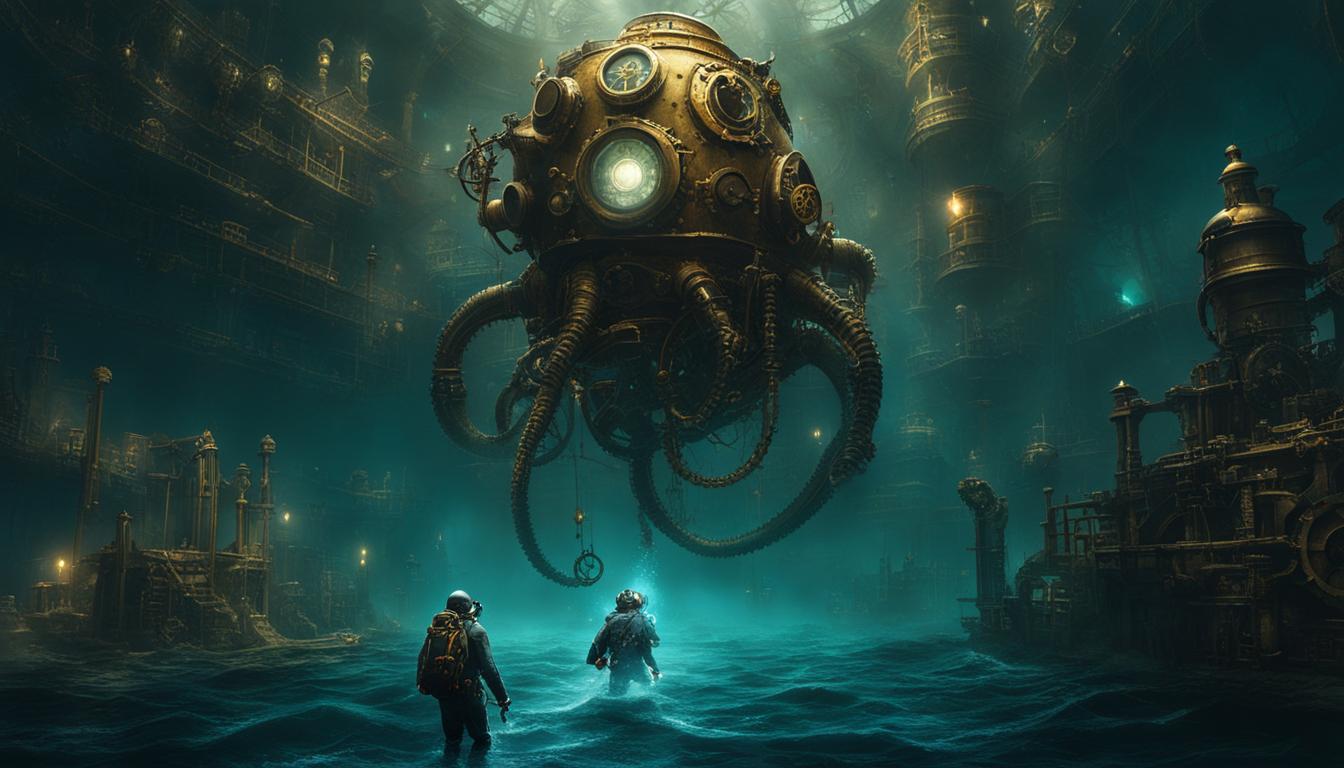Steampunk, a captivating blend of Victorian-era aesthetics, steam-powered technology, and elements of science fiction and fantasy, is not just reserved for adult enthusiasts. It has the potential to ignite children’s imaginations and enhance their learning experiences. By integrating steampunk themes in education, we can create engaging and immersive environments that foster creativity and curiosity in young minds.
Steampunk traces its origins to the works of renowned science fiction authors like Jules Verne and H.G. Wells. Its key characteristics encompass mesmerizing aesthetics, steam-powered machinery, alternate history, and elements of science fiction and fantasy. By introducing students to steampunk literature, art, and media, we can expose them to a whole new world of artistic expression and encourage their creative thinking.
Teaching steampunk concepts in schools is not limited to English or Language Arts classes. It can be integrated into various subjects, allowing students to explore and understand historical events, scientific concepts, and technological advancements in an exciting and unconventional way. The educational benefits of incorporating steampunk themes are vast, ranging from enhancing critical thinking and problem-solving skills to broadening students’ perspectives in multiple disciplines.
Key Takeaways:
- Steampunk is a captivating blend of Victorian-era aesthetics, steam-powered technology, and elements of science fiction and fantasy.
- Incorporating steampunk themes in education can foster creativity and curiosity in young minds.
- Steampunk can be introduced through literature, art, and media, exposing students to various forms of artistic expression.
- Teaching steampunk concepts can be integrated into multiple subjects, enhancing critical thinking and problem-solving skills.
- Integrating steampunk themes in education broadens students’ perspectives and understanding of historical events and scientific concepts.
Incorporating Steampunk Fashion in Children’s Clothing
Steampunk fashion is not just for adults; it can be a whimsical and creative way for children to express their style and imagination. With its blend of 1800s aesthetics and futuristic elements, steampunk fashion for kids brings a sense of adventure and curiosity to their everyday outfits.
When selecting steampunk clothes for children, comfort and safety should be prioritized. Avoid tight or constricting clothing and opt for soft, breathable materials that allow for ease of movement. Emphasize child-friendly steampunk attire that is suitable for their age and activities while still capturing the essence of the steampunk aesthetic.
Steampunk fashion allows children to explore their creativity, encouraging them to embrace their uniqueness and cultivate their own sense of style.
Accessories play a crucial role in completing a steampunk-inspired look. Steampunk accessories for children, such as goggles, top hats, and timepieces, can add a touch of whimsy and authenticity to their outfits. These accessories not only enhance the overall steampunk aesthetic but also fuel their imagination and storytelling.
Steampunk Fashion for Boys and Girls
Steampunk fashion for boys can include elements inspired by industrial machinery and Victorian-era style. Leather vests, canvas pants, and boots can create a rugged and adventurous look. For girls, steampunk fashion offers a range of styles, such as white tops, leather boots, skirts with lace trim, and veils, which add a touch of elegance and charm.
- Steampunk fashion can be adapted to be unisex by choosing gender-neutral clothing and colors. This allows children to explore their individuality without conforming to traditional gender norms.
- For babies and young children, steampunk accessories like goggles or tiny top hats can add a delightful steampunk touch to their outfits.
- Children aged 5 to 10 can be encouraged to mix and match steampunk-themed items to create their own unique looks, fostering their creativity and imagination.
- Adolescents and preteens can delve deeper into various steampunk fashion trends and even design their own steampunk-inspired attire or accessories, giving them a sense of empowerment and ownership of their style.
Steampunk fashion not only allows children to express themselves but also cultivates their appreciation for imagination, creativity, and unique forms of self-expression.

Teaching Steampunk through Literature and Practical Projects
Incorporating steampunk themes in education goes beyond just fashion and aesthetics. It’s about embracing a unique blend of history, science fiction, and creativity. One effective way to introduce steampunk to students is through literature. By exploring steampunk-themed books like Kenneth Oppel’s Airborn series or Gail Carriger’s Soulless, teachers can immerse their students in a world where steam-powered machines reign supreme and adventure awaits.
But teaching steampunk doesn’t stop at reading novels. It can extend to practical projects and engaging classroom activities that captivate students’ imaginations. From designing and constructing their own steampunk-inspired inventions to creating intricate steampunk graphics or sculptures, these projects encourage hands-on learning and foster critical thinking skills. Steampunk-themed art projects are an excellent way to explore the intersection of art and technology while allowing students to express their creativity.
The beauty of steampunk lies in its versatility. It can be seamlessly integrated into various subjects, making it a dynamic teaching tool. For example, history lessons can come alive as students compare the actual events with steampunk interpretations found in literature or media. In science classes, students can delve into the principles behind steam-powered technology and explore the possibilities of alternative histories. By integrating steampunk into different subjects, teachers can create a stimulating and multidisciplinary learning environment.
Ultimately, teaching steampunk is not just about imparting knowledge but also inspiring students to think outside the box. By embracing the whimsical and mysterious world of steampunk, educators can ignite a passion for learning and cultivate a love for imaginative storytelling and innovative thinking.
FAQ
How can Steampunk be incorporated into children’s education?
Steampunk can be introduced through literature, art, and creative projects, fostering creativity and appreciation for artistic expression.
What are some practical ways to introduce Steampunk in education?
Practical ways include incorporating Steampunk literature, exposing students to Steampunk art and media, and encouraging creativity in creating Steampunk-inspired projects.
What are the key characteristics of Steampunk?
Key characteristics include its aesthetics, steam-powered technology, alternate history, and elements of science fiction and fantasy.
How can Steampunk fashion be incorporated into children’s clothing?
Steampunk fashion for children can include comfortable and safe clothing options, along with accessories like goggles, top hats, and timepieces.
What are some tips for selecting steampunk clothes for children?
Comfort and safety should be taken into account, such as avoiding tight or constricting clothing and opting for soft, breathable materials.
What are some examples of steampunk fashion for boys?
Steampunk fashion for boys can include elements inspired by industrial machinery and Victorian-era style, such as leather vests, canvas pants, and boots.
What are some examples of steampunk fashion for girls?
Steampunk fashion for girls offers a range of styles, such as white tops, leather boots, skirts with lace trim, and veils.
Can steampunk fashion be adapted to be unisex?
Yes, steampunk fashion can be adapted to be unisex by choosing gender-neutral clothing and colors.
How can steampunk fashion be incorporated for babies and young children?
Steampunk accessories like goggles or tiny top hats can add a steampunk touch to their outfits.
How can steampunk fashion be incorporated for children aged 5 to 10?
Children can be encouraged to mix and match steampunk-themed items to create their own looks.
How can steampunk fashion be incorporated for adolescents and preteens?
Adolescents and preteens can explore various steampunk fashion trends and design their own steampunk-inspired attire or accessories.
How can steampunk be taught through literature and practical projects?
Steampunk can be taught through literature by incorporating steampunk-themed books into English or Language Arts classes. Practical projects such as creating steampunk art or reimagining classic plays can also be incorporated.
How can steampunk be integrated into multiple curricula?
Teachers can integrate steampunk into multiple curricula by incorporating steampunk literature into English classes, exploring historical aspects in Social Studies, and examining scientific concepts related to steam-powered technology in Science.
How can steampunk-themed art projects be incorporated?
Steampunk-themed art projects can be incorporated by encouraging students to create steampunk graphics or sculptures.
How can classic plays be adapted into steampunk versions?
Classic plays can be adapted into steampunk versions for drama classes, encouraging creativity in reimagining stories.
How can steampunk be taught to enhance students’ understanding?
Teaching steampunk as a way to discuss historical events or scientific concepts can enhance students’ understanding and engagement.
How can students think critically about steampunk?
Teachers can challenge students to think critically by comparing the actual history with steampunk interpretations in literature or media.
What are some classic steampunk works that can be taught?
Classic steampunk works like Jules Verne’s 20,000 Leagues Under the Sea can be taught alongside related materials such as Oceanology or graphic novel adaptations.
What kind of steampunk projects can be assigned to teenagers?
Steampunk-themed projects can be assigned to teenagers, allowing them to explore their creativity and self-expression.
What should teachers consider when teaching steampunk?
It’s important to know the school’s inclination towards trying something new and to be mindful of students’ parents’ concerns.





